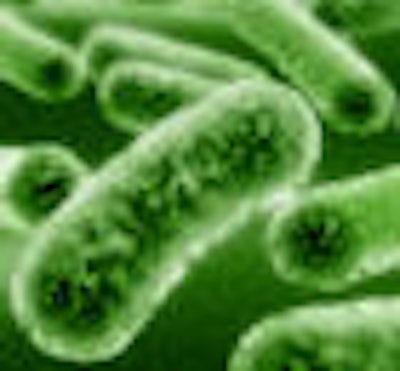
Dentists battle tooth decay and gum disease on a daily basis. Now British researchers have lent them a hand by discovering a new species of bacteria that could be a possible contributor to both.
Identifying and cataloguing new and existing oral bacteria could aid in developing new prevention methods and treatment of oral diseases. However, it is still unclear how relevant these particular new bacteria will be to treating periodontal disease.
The research team, led by William Wade, a professor of oral microbiology from the Dental Institute at King's College London, found three strains of the bacteria in oral mucosal tissue.
The new organism belongs to the Prevotella species, which are part of the normal microbial flora in humans and are associated with various oral diseases and infections in other parts of the body, and has been named Prevotella histicola, from the Latin word histicola -- "inhabitant of tissues."
"The healthy human mouth is home to a tremendous variety of microbes, including viruses, fungi, protozoa, and bacteria," Wade stated in a Kings College press release. "The bacteria are the most numerous: there are 100 million in every milliliter of saliva and more than 600 different species in the mouth."
Researchers performed a thorough phenotypic and genotypic characterization of these strains and published the results in the International Journal of Systematic and Evolutionary Microbiology (August 2008, Vol. 58:8, pp. 1788-1791).
The three strains form a homogenous group and are clearly distinct from any species with validly publishable names, the authors noted.
"Cells are saccharolytic and are able to ferment fructose, glucose, lactose, maltose, mannose, raffinose, and sucrose, but not arabinose, cellobiose, mannitol, melezitose, melibiose, rhamnose, ribose, salicin, sorbitol, trehalose, or xylose," they stated. "Major amounts of acetic acid and succinic acid and trace to minor amounts of isovaleric acid and lactic acid are produced as end products of metabolism."
The researchers found the new species living inside both healthy tissue and oral cancer cells.
"This confirms other work showing that oral bacteria can invade both tissues and individual cells," Wade stated.
This discovery is part of a larger goal of describing oral microbiota, Wade told DrBicuspid.com in an e-mail interview. Less than half of oral bacterial species have yet been named, and around half cannot even be cultured in the laboratory, he noted.
"Although we are looking for life on Mars, we are still largely ignorant of the microbial world of our own mouths!" Wade said.
"Very few single discoveries consist of major breakthroughs. In this case, the discovery of a new human oral species of Prevotella (a genus of gram-negative bacteria) is important, but further information will be needed to determine its specific importance related to periodontal diseases," said Chris H. Miller, Ph.D., a professor of oral microbiology at Indiana University. "According to the current NIDCR [National Institute of Dental and Craniofacial Diseases] listing of oral microbial species, there are already five species of oral Prevotella."
Tooth decay and gum disease are not traditional infectious diseases; they result from an imbalance between the human host and its commensal microbiota, influenced by environmental factors, Wade explained.
"To understand the interactions between host and microbiota, we need to fully characterize the microbial communities present," he said.
Wade's team, in collaboration with scientists at the Forsyth Institute in Boston, compiled a list of oral bacterial species earlier this year. That list comprises 600 species and provides descriptions of each species together with tools for analysis of their DNA.
Although most bacteria in the mouth are important for oral health, some can potentially cause disease. This database will help scientists study the role of specific bacteria in human health and disease, according to the college press release.
A better understanding of oral bacteria can also assist in developing new prevention methods and treatment of oral diseases.
"In the case of gum disease, it is clear that individuals who are susceptible display a greater degree of inflammation than those who are not susceptible, to the same level of bacterial challenge," Wade told DrBicuspid.com. "New treatments will be aimed at restoring tolerance to the normal microbiota in susceptible individuals."



















